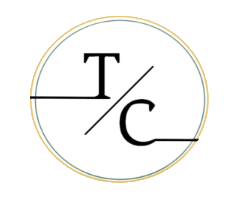Average Cost vs. Standard Cost
Average Cost vs. Standard Cost
Average cost determines the total amount of product purchased in a given period. On the other hand, a standard cost estimates the actual costs of a company’s production process.
For example, a small business may set the standard cost of a donut at $5, but the average cost can be $7 due to ingredient prices or discounts.
Average Costing
Average Costing is straightforward, easy to implement, and provides a clear, real-time view of actual costs throughout the manufacturing process. Since it tracks actual costs rather than estimates, businesses can compare current costs against historical data for better performance management.
This method is especially useful for new businesses that don’t have much historical data yet but need an effective way to track profitability. It also works well for companies with consistent inventory and production volumes, as it ensures profit margins are based on actual costs, not projections.
Additionally, overhead is allocated based on real-time numbers, keeping things simple and efficient.

Standard Costing
Standard Costing assigns predefined, set costs to inventory items, making it useful for businesses that prefer a structured approach to cost control. Instead of tracking actual costs in real-time, this method flags variances between projected and actual costs, allowing companies to investigate discrepancies and adjust accordingly.
Because it relies on pre-set cost assumptions, Standard Costing requires more maintenance and oversight, making it a better fit for established businesses with well-defined processes and stable production cycles.
Overheads are applied at a standard rate, but periodic adjustments (true-ups) are necessary to align estimates with actual expenses.
If your business is still growing and you need an easy, low-maintenance system, Average Costing might be the way to go. But if you have a mature operation with strong financial controls, Standard Costing can offer deeper insights into cost variances and budgeting accuracy.
The right choice depends on your company’s structure, goals, and how much effort you want to put into cost tracking.
FAQs
What is standard cost vs. average cost?
Standard Costing and Average Costing are two different methods for valuing inventory and tracking production costs.
- Standard Costing assigns a predetermined, fixed cost to each unit of inventory. These costs are estimated based on projections and remain the same until updated, with any differences between actual and standard costs recorded as variances.
- Average Costing calculates the cost of inventory based on the weighted average of all units available, reflecting real-time cost changes. This means inventory costs fluctuate as new purchases or production occur.
What is the difference between standard cost and actual cost?
The key difference is that Standard Cost is an estimate, while Actual Cost reflects real expenses incurred.
- Standard Cost is based on forecasted materials, labor, and overhead costs, helping businesses plan and set benchmarks.
- Actual Cost is what the business actually spends on materials, labor, and overhead. If actual costs differ from standard costs, the difference is recorded as a variance, which companies analyze to improve cost control.
What is average cost vs. actual cost?
Average Cost and Actual Cost may seem similar, but they measure costs differently.
- Average Cost is calculated by taking the total cost of inventory and dividing it by the total number of units, giving a smoothed-out cost per unit.
- Actual Cost is the precise amount paid for each individual item or batch, without averaging.
What is the difference between the current cost and the standard cost?
- Current Cost is the real-time cost of producing or acquiring an item at any given moment. It fluctuates based on market conditions, supplier pricing, and operational expenses.
- Standard Cost is a pre-set, estimated cost that doesn’t change unless manually adjusted.
What is the difference between cost and average cost?
- Cost refers to the expense associated with producing or acquiring a single unit of goods or services, which can vary from item to item.
- Average Cost is the total cost divided by the number of units produced or purchased, smoothing out cost fluctuations and making inventory valuation easier.
For example, if a business buys materials at different prices throughout the year, the total cost fluctuates, but the average cost offers a steady measure for accounting purposes.
When to Use Standard Costing?
Standard Costing is best for businesses with stable production processes and predictable costs, such as manufacturing companies with consistent material and labor expenses. It works well when:
- The company needs a structured budgeting and cost-control system.
- Cost variances need to be analyzed for operational efficiency.
- Financial planning and forecasting require a stable cost baseline.
- The business wants to compare projected vs. actual costs to improve decision-making.

